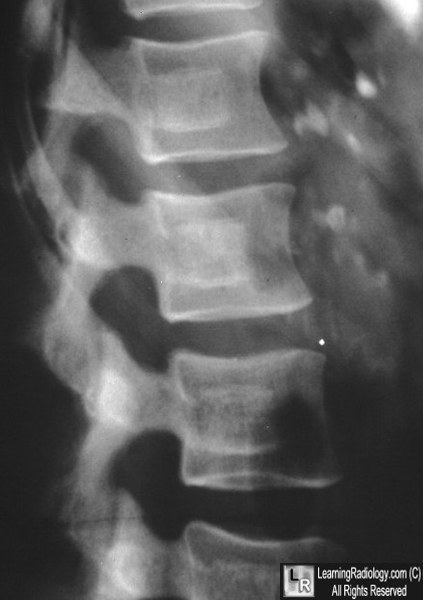|
|
"Bone Within A Bone"
General Considerations
- Descriptive term used when there is the appearance of a smaller version of a bone contained within its larger version
- Usually results from prior systemic illness and alteration of bone growth
- An analogous finding are the “growth recovery lines” seen in the metaphyses of long bones
- Osteoblasts form a thin, transversely oriented bony template on the underside of the zone of proliferative cartilage that has stopped growing during the period of stress or illness.
- With recovery, chondroblastic and osteoblastic activity resumes,
Causes
- Normal (in the spine of infants)
- Thorotrast administration
- Osteopetrosis
- Paget disease
- Sickle cell disease or thalassemia
- Lead poisoning
- Acromegaly
- Congenital syphilis
- Hypervitaminosis D
- Complex Regional Pain Syndrome
Imaging Findings
- A miniature version of a bones, usually seen in the spine, pelvis and long bones, is seen within the larger, “parent” bone

Bone Within a Bone. The patient had been studied with thorium dioxide (Thorotrast) many years earlier. Thorotrast was used as a radiologic contrast agent but it itself was radioactive. The changes in the spine are thought to be due to radiation osteitis. The dense lymph nodes anterior to the spine still contain Thorotrast 30 years after its use.
Bone within a bone. HJ Williams, AM Davies AM, and S Chapman. Clin Radiol. 2004 Feb;59(2):132-44.
The 'Bone Within a Bone' DH Frager; K Subbarao. JAMA. 1983;249(1):77-79
|
|
|